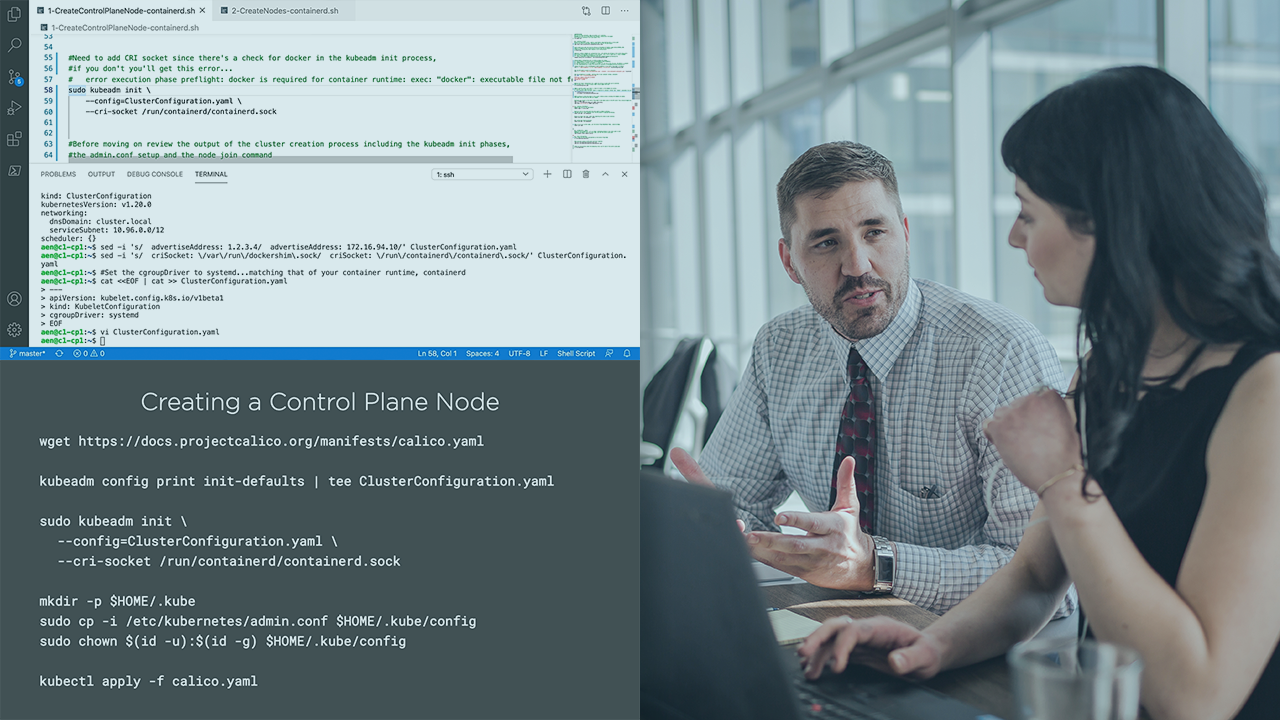- Course
Kubernetes Installation and Configuration Fundamentals
Let’s get you started learning Kubernetes. First, you'll learn about its architecture, and then how to install your first cluster. With that cluster up and running you'll explore how to work with it and deploy applications in Kubernetes!

- Course
Kubernetes Installation and Configuration Fundamentals
Let’s get you started learning Kubernetes. First, you'll learn about its architecture, and then how to install your first cluster. With that cluster up and running you'll explore how to work with it and deploy applications in Kubernetes!
Get started today
Access this course and other top-rated tech content with one of our business plans.
Try this course for free
Access this course and other top-rated tech content with one of our individual plans.
This course is included in the libraries shown below:
- Core Tech
What you'll learn
Let’s take your Kubernetes admin skills to the next level and get you started learning how to install, configure and work with a Kubernetes cluster. In this course, Kubernetes Installation and Configuration Fundamentals, you will learn foundational knowledge needed to install, configure and deploy applications in a Kubernetes cluster. First, you will learn about Kubernetes' architecture, looking closely at each of the cluster's components and their roles. Next, you will discover how to install and configure a Kubernetes cluster: you'll look at how to perform installations on-premises with kubeadm, and in cloud scenarios such as Azure Kubernetes Services and Google Kubernetes Engine. Finally, you will explore how to interact with your cluster, deploying Pods, Services, and Deployments. When you’re finished with this course, you will have the skills and knowledge of Kubernetes needed to administer a Kubernetes cluster and deploy applications in Kubernetes. Software required: Linux. This course can also help you prepare for your Certified Kubernetes Administrator (CKA) certification.
Kubernetes Installation and Configuration Fundamentals
-
Introduction, Course, and Module Overview | 1m 22s
-
What Is Kubernetes? Kubernetes Benefits and Operating Principles | 5m 16s
-
Introducing the Kubernetes API - Objects and API Server | 2m 34s
-
Understanding API Objects - Pods | 2m 54s
-
Understanding API Objects - Controllers | 3m 16s
-
Understanding API Objects - Services | 1m 30s
-
Understanding API Objects - Storage | 1m 5s
-
Kubernetes Cluster Components Overview and Control Plane | 5m 52s
-
Nodes | 4m 54s
-
Cluster Add-on Pods | 1m 18s
-
Pod Operations | 2m 38s
-
Service Operations | 1m 36s
-
Kubernetes Networking Fundamentals | 3m 10s
-
Module Summary and What's Next! | 40s

